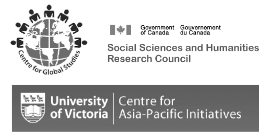Project Director’s Message June 2025
Dear Colleagues,
Japanese Peruvian businesses were ransacked in May 1940, as Fernando Nakasone Nozoe explains in his contribution to this newsletter. His story echoes accounts from Canada in the 1940s. One Japanese Canadian, who remained in Vancouver late into the fall of 1942, after most of the population had already been uprooted, described mobs descending on vacated homes:
As soon as the family left and we all said goodbye to them . . . all these people would come out . . . they had hammers and axes, and they would just crumble the window or the door glass and put their hands around and open up the lock and then the door. And it was just like a crazy mob would run in and you see every stick of furniture or anything that was left in the house. It was a grand melee of people. They stripped the place clean.[i]
Confirmation comes in other sources. Representatives of Canada’s Office of the Custodian found pillaged businesses, farms, and homes when they circulated to places from which Japanese Canadian had been uprooted. But, they did not take photographs. This one, from Lima, gives some sense of the devastation that they may have encountered.


Evidence of looting and vandalism changed our understanding of the story of the uprooting in Canada. The policy was set boardrooms in Ottawa, where officials far removed from the lives of Japanese Canadians made decisions that ruptured their lives. Alongside those politicians and civil servants, thousands of former neighbours, acquaintances, and even friends of Japanese Canadians were implicated in the destruction of communities.
Sherri Kajiwara, from the Director|Curator of the Nikkei National Museum and Chair of the Exhibitions Cluster, and I learned about looting in Lima when we travelled there to join a symposium of Nikkei migration museums from across Latin America. We met Frank and his Peruvian colleagues there, along with representatives from Bolivia, Mexico, and our partners in Brazil. Friends from Australia and Los Angeles beamed in online. It was an exciting and bewildering experience of commonality layered upon difference, a conference of local initiatives striving toward a shared story.
What do we learn by placing testimony from Canada alongside a photograph from Lima, the story of Fernando’s grandmother and her neighbours? We’ve been at this for a few years now, and yet answers remain somewhat elusive. It is hard to put these experiences – so similar in so many respects and yet also different – together. In answer, we continue to engage with one another and to do this work.
[i] The full interview (Jean Ikeda-Douglas, interviewed by Heather Read and Elizabeth Fujita, 20 April 2015), can be found in the Oral History section of the Landscapes of Injustice Research Database.


 Instagram
Instagram